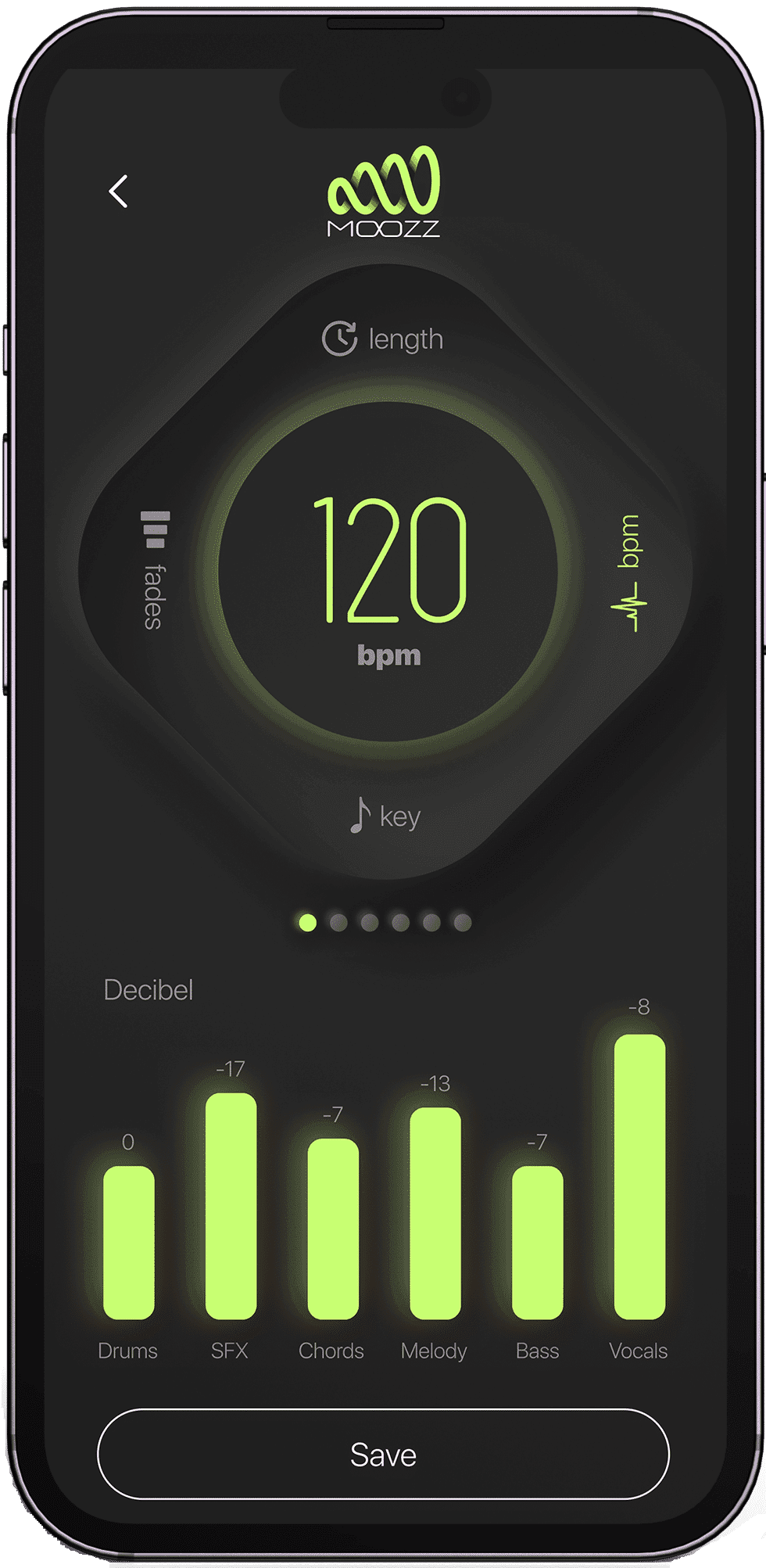Moozz is a Switzerland-based AI music application that revolutionizes how users interact with and create music. This case study details the development of both iOS and Android versions of the app, highlighting the complex technical challenges overcome, including deep machine learning implementation, timbre transfer between instruments, and real-time audio manipulation features that required low-level programming in C/C++.
Project Overview and Challenges
The Moozz AI Music App represents a significant advancement in the field of AI-powered music creation. The client, a Switzerland-based music technology company, approached us with a vision for a cross-platform mobile application that would make sophisticated music creation accessible to both amateur enthusiasts and professional musicians alike.
The development presented several formidable challenges:
- Implementing complex machine learning algorithms for timbre transfer between different instruments
- Developing real-time audio processing capabilities with minimal latency
- Creating an intuitive user interface for sophisticated music manipulation tools
- Ensuring cross-platform compatibility while maintaining high performance
- Working with low-level audio processing technologies not natively supported by Flutter, Swift, or Kotlin

Advanced audio editing interface with BPM control and multi-channel mixing capabilities
Technical Implementation
The technical implementation of Moozz required expertise across multiple domains, including machine learning, audio signal processing, and mobile development. The core audio processing engine was built using C/C++ to achieve the necessary performance for real-time effects processing.
One of the most significant technical challenges was implementing timbre transfer algorithms that could analyze the unique sound characteristics of one instrument and apply them to another while maintaining musical coherence.
This required developing custom neural network architectures capable of decomposing audio into its fundamental components and reconstructing it with modified timbral qualities—all while running efficiently on mobile hardware.

The unique DNA feature that personalizes your music creation experience
Key technical components included:
- Custom-built audio processing engine in C/C++
- FFT-based spectral analysis for audio feature extraction
- Neural network models for timbre transfer and audio synthesis
- Native platform integration using JNI (Android) and Objective-C++ (iOS)
- Real-time audio effects processing pipeline (reverb, semitones, tempo adjustment)
- Cross-platform UI implementation with performance optimizations
User Experience Design
Despite the technical complexity under the hood, Moozz needed to present an intuitive, accessible interface to users. We focused on creating a sleek, minimalist design with an emphasis on visual feedback for audio parameters.

Home screen with intuitive tiled layout for different music functions

Onboarding screen welcoming users to the new dimension of AI music
The user experience was crafted around core user journeys:
- Music discovery and exploration through genre-based recommendations
- Audio composition with AI-assisted tools
- Real-time performance adjustments with interactive visualizations
- Social sharing and collaboration features
Key UX Features
Visual Feedback
Real-time audio visualization
Intuitive Controls
Gesture-based parameter adjustment
Dark Theme
Reducing eye strain during sessions
Adaptive Layout
Optimized for different devices
Audio Visualization
Visual representation of audio
Guided Workflows
Progressive disclosure of features
Audio Features and Capabilities
At its core, Moozz is distinguished by its powerful audio manipulation capabilities. The app enables users to adjust multiple parameters that would typically require professional audio engineering expertise.

Music player interface with genre selection and advanced playback controls
Key audio features include:
- Tempo adjustment (60-180 BPM) with beat preservation
- Pitch shifting with semi-tone precision
- Multi-channel mixing with individual track control
- Instrument timbre transfer (e.g., guitar to piano, vocals to strings)
- Spatial audio effects (reverb, delay, widening)
- AI-based harmonic enhancement and chord suggestion
- Real-time frequency band adjustment (drums, SFX, chords, melody, bass, vocals)
Cross-Platform Development Challenges
Developing for both iOS and Android platforms presented unique challenges, particularly given the low-level audio processing requirements that weren't easily accommodated by cross-platform frameworks.
The solution involved developing a hybrid approach:
- Core audio processing engine developed in C/C++ for maximum performance and code reuse
- Platform-specific bridges to integrate with native iOS and Android audio systems
- Custom build pipelines to handle the compilation of native components
- Optimization for different device capabilities and hardware configurations
This approach allowed us to maintain feature parity across platforms while still leveraging platform-specific optimizations where needed.
AI and Machine Learning Implementation
The heart of Moozz's innovation lies in its AI capabilities, which required deep expertise in machine learning applied to audio processing. The implementation included:
- Training custom neural networks on vast datasets of musical instruments and performances
- Developing on-device inference capabilities to minimize latency and preserve privacy
- Creating the "DNA" feature that learns user preferences and style to personalize music creation
- Implementing efficient ML model compression techniques to reduce app size and improve performance
Demonstration video showcasing Moozz's key features and capabilities
Deployment and Market Impact
Following rigorous testing and optimization, Moozz was successfully launched on both Apple App Store and Google Play Store. The app quickly gained traction among both music enthusiasts and professional producers.
Key achievements include:
- Featured in the "New & Noteworthy" section of the App Store in multiple regions
- Positive critical reception from music technology publications
- Growing community of users creating and sharing unique compositions
- Partnerships with professional music producers and artists
The application continues to evolve with regular updates introducing new features and refinements based on user feedback and advances in AI technology.





